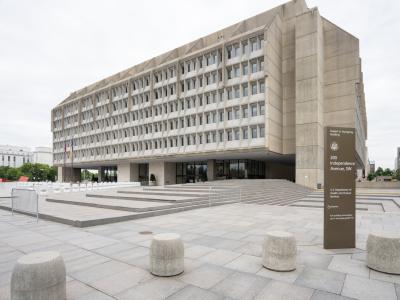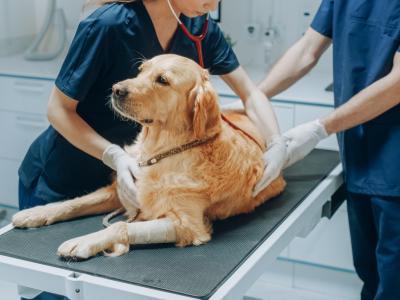More than 1 in 3 urinary infections in nursing homes caused by resistant bacteria
An analysis of urinary tract infections (UTIs) in US nursing homes found that more than one in three were caused by antibiotic-resistant pathogens, researchers reported in Infection Control & Hospital Epidemiology.
In the study, researchers from the Centers for Disease Control and Prevention (CDC) Division of Healthcare Quality and Promotion analyzed data on UTI-causative pathogens and antibiotic susceptibility testing results reported to the National Healthcare Safety Network (NHSN) by US nursing homes. All nursing homes that reported at least 1 complete month of UTI surveillance data were included. The data have been reported to NHSN since 2012, but this is the first time they have been analyzed.
Overall, 243 nursing homes from 46 states reported at least 1 month of UTI surveillance data from January 2013 through December 2017. In total, 6,157 pathogens were reported from 5,485 UTIs, with 9 pathogens accounting for 90% of all UTIs.
The three most frequently identified pathogens were Escherichia coli (41%), Proteus species (14%), and Klebsiella pneumoniae/oxytoca (13%). Among E coli, fluoroquinolone resistance (49.9%) and extended-spectrum cephalosporin resistance were the most prevalent. Staphylococcus aureus (67.1% resistant to methicillin) and Enterococcus faecium (59.5% resistant to vancomycin) had the highest levels of resistance but accounted for less than 5% of pathogens reported.
Of the 5,485 UTIs reported, 36% were associated with a resistant pathogen.
"The levels of antibiotic resistance observed demonstrate the importance of monitoring nursing homes and implementing nursing-home specific antibiotic stewardship activities," the authors wrote.
Aug 12 Infect Control Hosp Epidemiol abstract
Israeli study finds high antibiotic use for asymptomatic bacteriuria
In another study in Infection Control & Hospital Epidemiology, Israel researchers reported a high rate of improper antibiotic use and a high rate of multidrug-resistant organisms (MDROs) in patients with asymptomatic bacteriuria (ASB), along with significantly worse outcomes in patients who received antibiotics.
The retrospective case-control and cohort analysis looked at adults patients at an Israeli tertiary medical center with a positive urine culture, defined as the growth of one or two pathogens in a single sample. Pregnant women, kidney transplant recipients, and patients who underwent urologic procedures were excluded.
The researchers constructed multivariable logistics regression models to analyze predictors and outcomes associated with antibiotic use in ASB patients. Despite efforts to reduce the practice, treatment of ASB—defined as the isolation of bacteria in an uncontaminated urine specimen in the absence of UTI symptoms—is prevalent across healthcare settings and frequently leads to inappropriate antibiotic prescribing.
Of the 1,530 patient-unique cultures collected in 2017, 610 (40%) had ASB, and antibiotic therapy was administered to 178 (29.2%) of those patients. Among the 696 pathogens isolated from the patients, 36% had at least one MDRO, most commonly extended-spectrum beta-lactamase–producing Enterobacteriaceae (23%) or Pseudomonas aeruginosa (5.4%).
Independent predictors of improper administration of antibiotics were dependent functional status (adjusted odds ratio [aOR], 2.3; 95% confidence interval [CI], 1.4 to 3.6) and male sex (aOR, 2.0; 95% CI, 1.25 to 2.6). Use of antibiotics was independently associated with re-hospitalization (aOR, 1.7; 95% CI, 1.1 to 2.6) and acute Clostridioides difficile infections in the following days (aOR, 4.5; 95% CI, 2 to 10.6).
"These findings should prompt practitioners and administrators to invest efforts in reducing antibiotic administration for ASB and to discourage the practice of obtaining urine cultures from certain high-risk groups with no signs or symptoms of UTI," the authors concluded.
Aug 13 Infect Control Hosp Epidemiol abstract
Unnecessary prescribing by Canadian physicians linked to antibiotic volume
Total antibiotic use among a cohort of family physicians in Ontario, Canada, was strongly correlated with unnecessary antibiotic prescribing, Canadian researchers reported earlier this week in Clinical Infectious Diseases.
To study the association between total and unnecessary antibiotic use among family physicians in Ontario, the researchers looked at 5 years of electronic medical records from a database that collects data from a sample of Ontario physicians.
They used predefined expected antibiotic prescribing rates for 23 common primary care conditions to calculate unnecessary prescribing rates and multilevel Poisson regression models to evaluate the association between total antibiotic volume, adjusted for multiple practice- and physician-level covariates, and unnecessary prescribing.
Over the study period, there were 499,570 patient encounters and 152,853 encounters that resulted in one or two antibiotic prescriptions. Substantial inter-physician variability in unnecessary prescribing was observed, but in the fully adjusted model, the only covariate that could explain the inter-physician variability was total antibiotic volume (adjusted rate ratio, 2.11; 95% CI, 2.05 to 2.17). No other practice- or physician-level variables were associated with unnecessary prescribing.
The authors of the study say the results strongly support community antibiotic stewardship teams using total antibiotic volume as a surrogate for unnecessary prescribing and a basis for providing feedback to family physicians.
Aug 12 Clin Infect Dis abstract
UK, South African scientists to collaborate on antibiotic discovery
Scientists in the United Kingdom and South Africa yesterday announced a collaborative effort to establish a hub for new antibiotic discovery.
The three-year, £1.9 million (US $2.5 million) project, led by the University of Plymouth in the United Kingdom and Rhodes University in South Africa, aims to discover novel compounds from natural sources that could be developed into new antibiotics. The focus of the effort will be on unexplored, biodiverse habitats, including deep sea and polar environments.
Among the initial projects will be an exploration of the diversity of antimicrobial peptides in South Africa.
"Natural products and their synthetic analogues are the basis for the majority of antibiotics in clinical use today, and the hope is that this collaboration will go some way towards unlocking the potential resources contained in marine and terrestrial biota in South Africa, one of the world's most biodiverse places," Mat Upton, PhD, a professor in medical microbiology at the University of Plymouth and project leader, said in a university press release.
Aug 13 University of Plymouth press release













